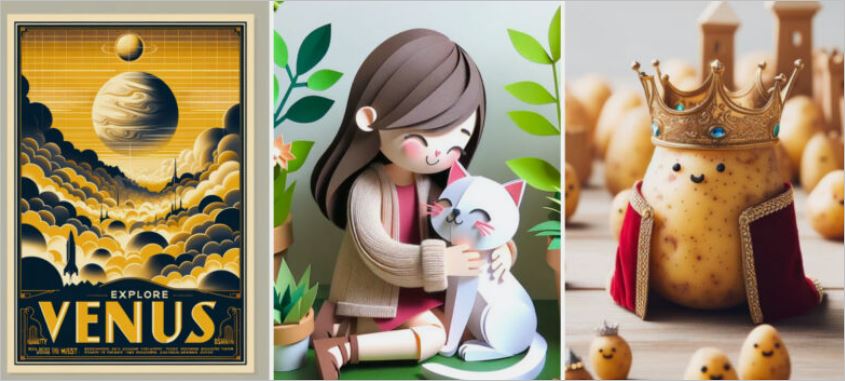OpenAI released a new version of its DALL-E image generator and incorporated the technology into its popular ChatGPT chatbot
In the ever-evolving landscape of artificial intelligence, OpenAI has once again stepped into the limelight, unveiling DALL-E 3, the latest iteration of its AI image synthesis marvel.
This cutting-edge technology has been integrated seamlessly into the widely popular ChatGPT chatbot, marking a significant stride in the realm of AI-generated imagery.
DALL-E 3 is more than just an upgrade; it’s a leap forward in the field of text-to-image generation.
Unlike its predecessors, OpenAI has maintained a shroud of secrecy around the technical details of this new model.
Nevertheless, it is likely that DALL-E 3 was trained on an extensive dataset of images sourced from human artists and photographers, including licensed content from stock websites such as Shutterstock.
With the passage of time, this formula has been refined, utilizing new training techniques and extended computational training periods to enhance its capabilities.
One striking aspect of DALL-E 3 is its proficiency in translating textual prompts into visually stunning images.
While OpenAI has showcased carefully curated examples to demonstrate its prowess, the model consistently produces images that faithfully adhere to the given prompts.
Gone are the days of tinkering with prompts to achieve desirable results
DALL-E 3 refines even the minutest of details, such as hands, with unparalleled finesse, delivering captivating images without the need for prompt engineering.
To provide a comparative perspective, Midjourney, a competing AI image synthesis model, excels at rendering photorealistic details but demands intricate manipulation of prompts to exert control over image output.
In contrast, DALL-E 3’s capabilities shine through without the need for such complexities.
Moreover, DALL-E 3 has conquered the challenge of handling text within images, a feat that its predecessor struggled with.
Competing models like Stable Diffusion XL and DeepFloyd are making strides in this area, but OpenAI’s latest offering sets a new standard.
An illustrative prompt featuring an avocado in a therapist’s chair, expressing, “I feel so empty inside” with a pit-sized hole at its center, results in a cartoon avocado perfectly encapsulating the character’s quote within a speech bubble.
ChatGPT and DALL-E 3 Integration: A Seamless Fusion of AI Technologies

This level of integration between text and imagery is a testament to the advancements achieved in DALL-E 3.
Perhaps the most groundbreaking aspect of this release is that DALL-E 3 has been seamlessly woven into ChatGPT, bringing about an exciting synergy between the two technologies.
It will be an integral feature of ChatGPT Plus, allowing users to refine conversations with AI-generated images.
This integration means that ChatGPT can now generate images based on the context of ongoing conversations, potentially unlocking novel capabilities.
READ : ChatGPTreleases app version
When OpenAI released a new version of its DALL-E

Microsoft’s Bing Chat AI assistant, built on OpenAI’s technology, has already showcased image generation in conversation, indicating the transformative potential of this integration.
OpenAI’s journey in AI-generated imagery began with the original DALL-E in January 2021, followed by a significantly improved sequel in April 2022.
These models employ a technique called latent diffusion, which refines noise into recognizable images based on the knowledge acquired during training and guidance from textual prompts.
This technology paved the way for the emergence of open-weight models like Stable Diffusion, further revolutionizing the field.
However, the ascent of AI-generated imagery has not been without its controversies. Artists have raised concerns about the potential replacement of their work and the unethical replication of their styles.
Lawsuits regarding copyright infringement related to training data have also emerged. In response,
OpenAI has made efforts to address these concerns. DALL-E 3 is designed to decline requests for images in the style of living artists, and creators can opt out of having their images used for training future models.
Nonetheless, some artists argue that AI training should be strictly opt-in, highlighting the ongoing ethical debate surrounding AI-generated content.
As we look forward to the official release of DALL-E 3 to ChatGPT Plus and Enterprise customers in early October, it’s clear that OpenAI’s latest offering is poised to redefine the possibilities of AI-generated imagery.
With its enhanced text-to-image synthesis capabilities and seamless integration into ChatGPT, DALL-E 3 represents a remarkable step forward in the evolution of artificial intelligence and creative expression
find news and other interesting articles on Google News